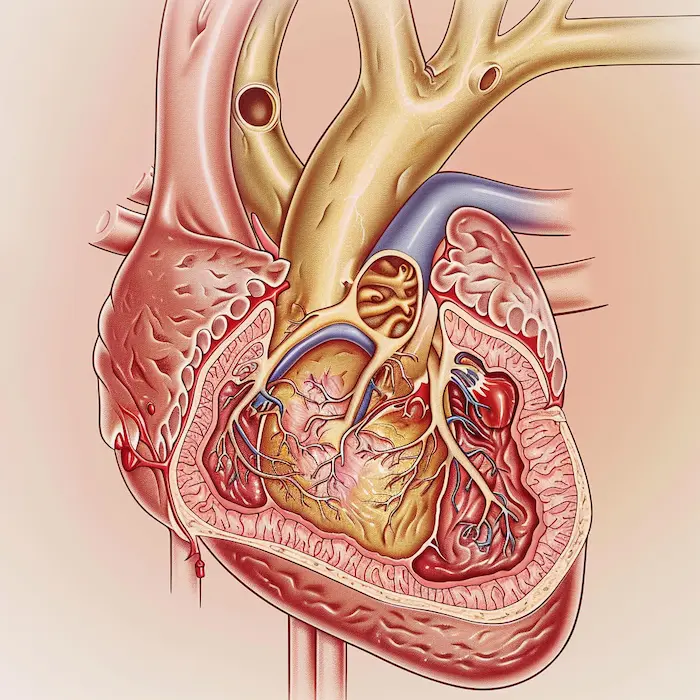
Progress in Neonatal Medicine for Newborns with Aortic Stenosis
Neonatology is concerned with congenital diseases, and aortic stenosis is a representative widely acknowledged congenital heart disease. This is felt when the aortic valve is constricted thus limiting the supply of blood from the heart. Stress efforts should be quick and efficient to improve the prospects of survival and quality of life of the affected neonates. These infants are now healthier due to advancement in 2024 where diagnosis and monitoring play a critical role in enhancing the health of a patient. In light of this, the later detection for children afflicted by aortic stenosis offers a better prognosis since more enhancements are being made regarding medical technologies leading to current treatment procedures. However, with the ongoing research in the medical field in the utilization of technology and surgery, it can be fronted that the direction of newborns with aortic stenosis becomes brighter and, therefore, the necessity of early diagnosis and effectiveness of current aortic stenosis treatment.

Amazing Information about Aortic Stenosis in Newborn
The newborn baby’s aortic stenosis is categorized broadly into two; critical and noncritical. The condition may demand urgent measures because it has a lethal effect if untreated; The other type is closely monitored until such a time when essential interventions are made. Slightly more common in males than in females, the incidence of three per 10,000 live births.
Pathophysiology Insights
Thus, when you hear somebody say that a particular patient has aortic stenosis, it simply means that the aortic valve has become narrowed, and blood has a hard time passing through the left ventricle to exit the heart and circulate throughout the body. This puts a lot of pressure on the heart and if not well managed the left ventricle known as hypertrophy begins to bulge and finally heart failure can occur. It may only be minimally used or its area may be significantly decreased even at birth making corrective action mandatory in the first place. However, even in less serious conditions, one should be vigilant because things may only worsen with time.

Getting the Right Diagnosis
Aortic stenosis is really bad news if it progresses to the point where you can feel it; but before you can, the only way to spot it is with an echocardiogram. This is the gold standard for seeing how the heart is constructed and what is happening in it at the moment. Whereas, due to fetal echocardiography, today we can detect a great offender, such as aortic stenosis, before the child is even born, let alone born; that is, you can get it fixed before you bring it home.
Current Treatment Approaches
Treatment for newborn aortic stenosis includes:
- Balloon Aortic Valvuloplasty: This is the standard procedure for congenitally critically obstructed valves; it has a 75% success rate of improving the valves’ function and blood circulation.
- Surgical Valvotomy: Balloon valvuloplasty is therefore excluded either by not being practicable or by having had limited success and there comes in surgical valvotomy. Again, this procedure entails cutting off the valve to free obstruction. Owing to the improvement in methods of carrying out surgery and medical care in the postoperative period, survival has risen to figures above 90%.
- Aortic Valve Replacement: In cases of severe valve leaflet damage, the patient will require an aortic valve replacement. These changes have paved the way for better designing of replacement valves that are of longer durability and proper size.
Post-Treatment Monitoring
Patients require follow-ups frequently since might experience other issues like valve regurgitation or heart failure. They found out that by the year 2024, technologies related to home monitoring would make it easier to monitor the conditions of patients, which would make issuing timely treatment changes possible.
Future Directions
Research is being pursued for improvements in newborn outcomes with aortic stenosis in the following ways:
- Gene Therapy: Another promising branch of scientific research for the given condition is the management of genes involved in the formation of the aortic valve to right the unnatural setting genetically.
- Regenerative Medicine: The area of research focusing on stem cells and tissue engineering and applying it to the heart to try and replace the unhealthy tissue and the valves of the heart with a new healthy one that would not require more surgeries in the future as the child grows.
Challenges and Considerations

The management of this disease remains challenging, and it depends on the timing of the physicians’ actions, the results of early operations, as well as the psychological and financial burden on the families of newborns.
Conclusion
Overweight and obesity are increased in children and adolescents with various degrees of renal impairment. The predictions about these babies have significantly improved over time due to advancements in the ways of diagnosing the conditions as well as the ways of treating the same. Multidisciplinary work simply has to go on guaranteeing that every child developing aortic stenosis gets as good a care and prognosis as possible.
